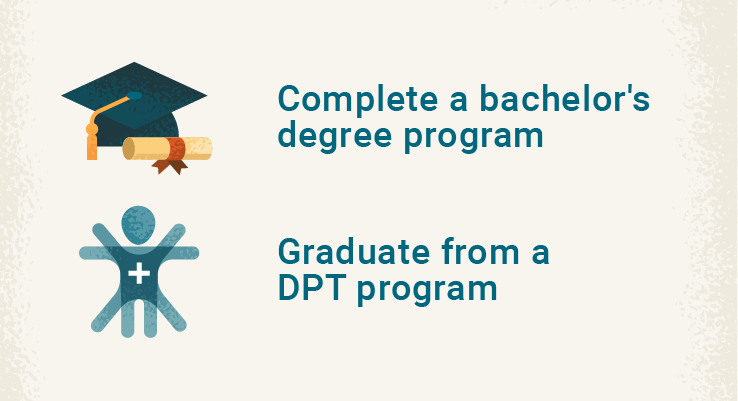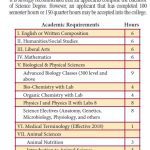Did you know that the demand for physical therapists is projected to grow by 18% from 2019 to 2029? If you’re considering a career in this field, it’s important to understand the education requirements that come along with it.
From completing a Doctor of Physical Therapy (DPT) program to obtaining the necessary licensure, there are several steps involved in becoming a physical therapist.
But don’t worry, in this discussion we will explore these requirements in detail, giving you a clear roadmap to follow on your path to becoming a physical therapist.
Doctor of Physical Therapy (DPT) Program
To become a physical therapist, you’ll need to complete a Doctor of Physical Therapy (DPT) program. This program is a graduate-level degree that prepares you for a career in physical therapy. The DPT program typically takes about three years to complete, and it includes both classroom instruction and hands-on clinical experience.
During the program, you’ll learn about the human body and how it functions, as well as the various techniques and treatments used in physical therapy. You’ll also gain practical experience by working with patients under the supervision of licensed physical therapists.
In order to be admitted into a DPT program, you’ll need to have a bachelor’s degree in a related field, such as biology or exercise science. Some programs also require prerequisite courses in subjects like anatomy and physiology.
Once you have completed the DPT program, you’ll need to pass a licensing exam in order to become a licensed physical therapist. This exam tests your knowledge and skills in the field of physical therapy and ensures that you’re prepared to provide safe and effective care to patients.
Required Coursework
You will need to complete specific coursework in order to meet the requirements for becoming a physical therapist.
This coursework is designed to provide you with the necessary knowledge and skills to effectively assess and treat patients with physical impairments. The coursework typically covers a wide range of subjects, including anatomy, physiology, kinesiology, neuroscience, and pharmacology. It also includes courses in exercise science, biomechanics, and therapeutic modalities.
These courses will give you a solid foundation in understanding the human body and how it functions.
In addition to these foundational courses, you’ll also need to complete coursework in clinical sciences, which focuses on the application of physical therapy principles in a clinical setting.
This coursework will cover topics such as patient evaluation, treatment planning, and therapeutic interventions. It will also include courses in medical ethics and professional practice, ensuring that you’re prepared to provide high-quality and ethical care to your patients.
Clinical Experience
Gaining clinical experience is an essential component of becoming a physical therapist. It provides you with the opportunity to apply the knowledge and skills you have acquired in a real-world setting, working directly with patients under the supervision of experienced professionals. During your clinical experience, you’ll have the chance to observe and participate in various aspects of patient care, including evaluating patients, developing treatment plans, and administering therapeutic interventions.
The purpose of clinical experience is to bridge the gap between theory and practice, allowing you to develop the clinical reasoning and problem-solving skills necessary for success in the field. It also helps you gain confidence in your abilities and develop a professional demeanor. By working with a diverse range of patients, you’ll learn how to adapt your treatment approaches to meet the unique needs of each individual.
Clinical experience is typically obtained through internships or clinical rotations, which are integrated into physical therapy programs. These experiences may take place in hospitals, outpatient clinics, rehabilitation centers, or other healthcare settings. The duration and intensity of the clinical experience can vary depending on the program, but most require a minimum number of hours to ensure that you have gained sufficient hands-on experience.
Licensing Exams
After completing your clinical experience, the next step towards becoming a physical therapist is successfully passing the required licensing exams. These exams are designed to assess your knowledge and competency in the field of physical therapy.
The National Physical Therapy Examination (NPTE) is the primary licensing exam that’s administered by the Federation of State Boards of Physical Therapy (FSBPT). This computer-based exam consists of multiple-choice questions that cover various topics such as examination, evaluation, diagnosis, prognosis, interventions, and outcomes in physical therapy practice. It’s important to note that the NPTE is a comprehensive exam that tests your understanding of both foundational and clinical knowledge.
To prepare for the licensing exams, it’s recommended that you review and study a variety of resources, including textbooks, study guides, and online practice exams. It’s also beneficial to participate in review courses or study groups to enhance your understanding of the exam content and improve your test-taking skills. Additionally, some states may require you to pass an additional state-specific exam or jurisprudence exam, which assesses your knowledge of state laws and regulations related to physical therapy practice.
Successfully passing the licensing exams is essential for obtaining your license to practice as a physical therapist. It demonstrates your competence and ensures that you meet the necessary standards to provide safe and effective care to your patients. Therefore, it’s crucial to dedicate sufficient time and effort to prepare for these exams in order to increase your chances of success.
Continuing Education
To maintain your professional competence and stay up-to-date with the latest advancements in the field, continuing education is an essential requirement for physical therapists. As a physical therapist, you need to constantly expand your knowledge and skills to provide the best possible care to your patients. Continuing education ensures that you stay informed about the latest research, techniques, and technologies in the field of physical therapy.
Continuing education can take various forms, including attending conferences, workshops, and seminars, as well as completing online courses and earning certifications. These opportunities allow you to deepen your understanding of specific areas within physical therapy, such as sports rehabilitation, orthopedics, or pediatrics. By gaining specialized knowledge, you can tailor your treatment plans to meet the unique needs of your patients.
Moreover, continuing education helps you maintain your professional licensure. Most states require physical therapists to complete a certain number of continuing education hours within a specific time frame to renew their licenses. By staying current with your continuing education requirements, you demonstrate your commitment to providing high-quality care and adhere to the standards set by your professional regulatory body.
In addition to enhancing your clinical skills, continuing education also offers networking opportunities. Connecting with other physical therapists and healthcare professionals can expand your professional network, provide mentorship opportunities, and foster collaboration on research projects or patient care initiatives.
Specializations and Advanced Certifications
Continuing education in physical therapy can open up opportunities for specializations and advanced certifications. By pursuing specialized training, you can enhance your knowledge and skills in a specific area of physical therapy. Specializations allow you to focus on a particular patient population or a specific aspect of physical therapy, such as sports rehabilitation, pediatric therapy, or geriatric care. These specialized certifications demonstrate your expertise and dedication to providing high-quality care to patients with unique needs.
In addition to specializations, advanced certifications can further enhance your professional development. These certifications are typically obtained through additional coursework, exams, and clinical experience. Advanced certifications can help you become an expert in specialized techniques or treatment approaches, such as manual therapy, neurorehabilitation, or orthopedic rehabilitation. These certifications not only demonstrate your advanced skills but also make you a more competitive candidate for job opportunities and promotions.
Furthermore, specializations and advanced certifications can open doors to unique career paths within the field of physical therapy. For example, you may choose to work in a specialized clinic or rehabilitation center that focuses on your area of expertise. You could also pursue a career in academia, research, or leadership roles within the field.
Frequently Asked Questions
What Are the Salary Expectations for Physical Therapists?
You can expect a competitive salary as a physical therapist. Salaries can vary based on factors such as experience, location, and setting, but the average salary for physical therapists is around $89,000 per year.
How Long Does It Typically Take to Complete a Doctor of Physical Therapy (Dpt) Program?
It typically takes about 3 years to complete a Doctor of Physical Therapy (DPT) program. You’ll need to dedicate time and effort to your studies, clinical rotations, and any additional requirements.
Are There Any Specific Physical Requirements or Physical Fitness Standards for Becoming a Physical Therapist?
To become a physical therapist, you don’t need specific physical requirements or fitness standards. However, being in good physical shape can be beneficial for performing the job duties effectively.
What Opportunities for Career Advancement Are Available for Physical Therapists?
Opportunities for career advancement as a physical therapist include specializing in areas like sports medicine or pediatrics, pursuing advanced degrees or certifications, and becoming a clinic director or starting your own practice.
Are There Any Common Misconceptions About the Field of Physical Therapy That You Would Like to Address?
There are some common misconceptions about physical therapy that you should know. It’s not just for athletes or the elderly. It can benefit people of all ages and with a wide range of conditions or injuries.
Conclusion
So, if you’re considering a career as a physical therapist, it’s important to know the education requirements.
You’ll need to complete a Doctor of Physical Therapy (DPT) program, which includes specific coursework and clinical experience.
After graduation, you’ll also need to pass licensing exams to become a licensed physical therapist.
Remember, continuing education and pursuing specializations or advanced certifications can help you stand out in this rewarding field.


